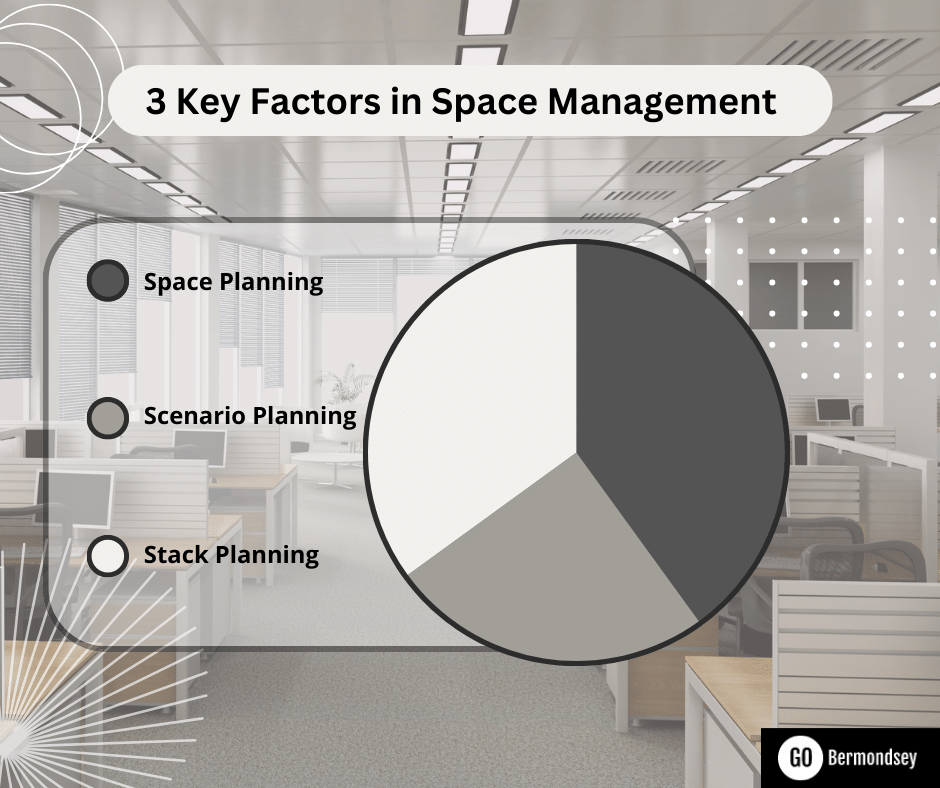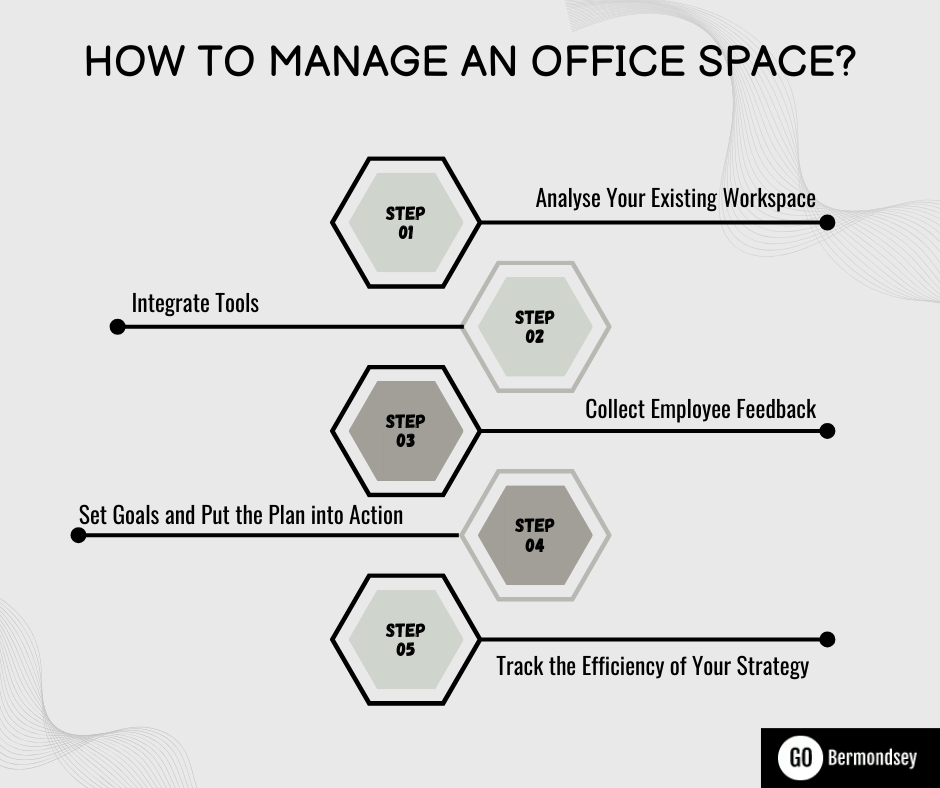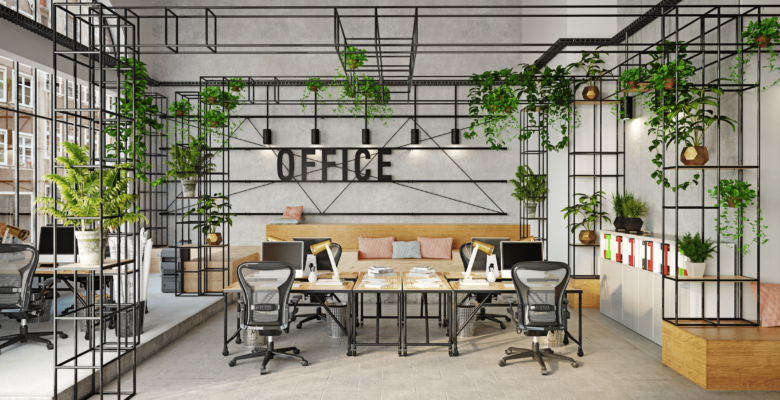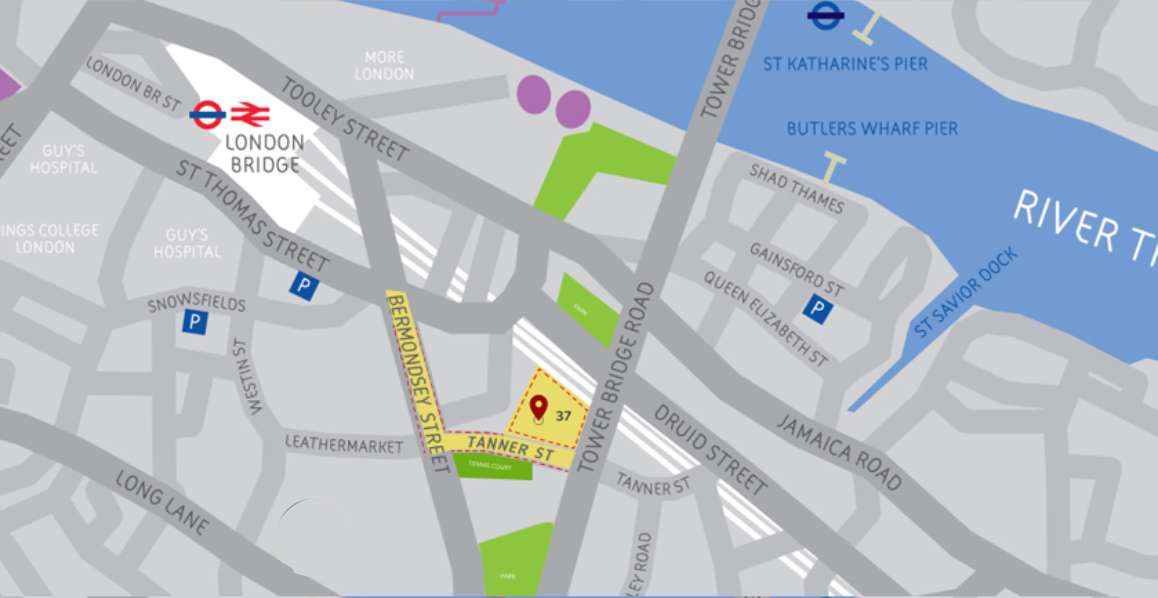In the period following the pandemic, we believed that remote working might become the new norm. A recent survey shows that 90% of companies are planning to implement a return-to-office policy by December 2024. Working from the office is now back on the cards.
And with it the need for adequate management of real estate. With employees returning to working from offices, ensuring the space is well looked after and employee needs met, while driving productivity is essential. If you are wondering how to achieve this, we’ve got you covered.
In this article, we discuss everything you need to know about office space management, including a step-by-step guide on managing your office space and seven actionable tips to help you get the most out of it.
What is Office Space Management?
Office space management is the practice of managing and monitoring physical space in your office. This process involves strategic planning to optimise work environments while offering cost-effective solutions.
Effective office space management requires office managers to analyse their real estate to understand how best the space can be utilised. They usually leverage numerous office space management tools to help them achieve this. We shall be discussing these further in the article.
What is the Importance of Office Space Management?
Office space management helps companies optimise the use of their real estate by helping them identify underutilised areas. This, in turn, has several benefits, from improving the benefit-cost ratio to fostering a healthy, productive environment for employees.
What Are The 3 Key Factors in Space Management?

Factor #1: Space Planning
Office managers must connect with different business departments to understand how office spaces can be optimised to help them meet their specific goals. For instance, they must examine what kind of work environment will help them most – open offices, activity-based workstations, agile working environments or bookable spaces.
Gaining their employee’s input on this will help office managers plan and monitor the work space efficiently.
Factor #2: Scenario Planning
Next, office managers must think ahead to anticipate the likely scenarios before having to actually enact them. By this, we mean they must test out floor plans and office layouts before committing to them completely.
This helps recognise any shortcomings with the proposed office layout and implement necessary adjustments well in time. To do this, office managers can integrate office planning software that allows them to create virtual versions of office layouts without having to actually shift heavy furniture.
Factor #3: Stack Planning
The final aspect of office space management is to create a stack plan. These allow office managers to get a bird’s eye view of their office space.
With this, they can optimise space utilisation by having an efficient sense of how much space is going unused and why. Stack planning also helps ensure the right teams are sitting together and their required tool stack is within close proximity.
What Are The 10 Benefits of Office Space Management?
The 10 benefits of office space management are:
- Drives Efficiency: An office space that helps employees get to work immediately helps drive efficiency and productivity.
- Reduces Costs: Work space management helps you optimise space utilisation, helping you recognise where costs, and even rent can be reduced.
- Increases Flexibility: Office space management allows you to accommodate a variety of working styles and employee needs. From standing desks to areas designated for brainstorming ideas- you can plan it all with a sound office layout.
- Drives Employee Experience: Effective office space management takes employee needs into account. It involves understanding your employees’ journey, from them entering the office space in the morning to them leaving at the end of the day. Taking a thoughtful approach helps employees feel valued, satisfied, and engaged and contributes to higher productivity levels.
- Reduces Burden on Office Managers: By helping office managers monitor office utilisation proactively, it ensures they do not have to scamper to meet sudden employee demands.
- Strengthens Work Culture: Company culture is directly affected by employee interactions. With sound office space management you can ensure your employees have adequate space to network and engage with each other.
- Facilitates Continuous Improvement: With efficient work space management, you can ensure your office space keeps up with changing employee needs. For instance, if you have an upcoming product launch, you might need a bigger meeting room and fewer individual desks so that marketing, sales, and product development teams can work together.
- Reduces Carbon Footprint: Optimising office space allows you to keep electricity and water utilisation under check, reducing your company’s overall carbon footprint.
- Optimises Space Utilisation: It helps you gain insight into which office areas might be less suitable due to their lack of facilities, capacity, visibility or proximity issues and make changes accordingly.
- Safeguards Employee Well-Being: Office space management allows office managers to ensure desks are not crammed together, lavatories are available at suitable intervals, communal areas are routinely cleaned, etc.
What Are Office Space Management Tools?
Technology is a powerful tool that can help you gain deeper insight into how your space is being utilised and identify areas of improvement. Office space management tools are software solutions designed to help businesses optimize the use of their physical workspace. These tools can streamline various aspects of office management, including space planning, desk booking, resource scheduling, and real-time occupancy tracking. They are particularly useful for accommodating flexible work arrangements, maximizing space utilization, and enhancing workplace experience.
List of Useful Office Space Management Tools
Here are four space management tools you should consider integrating into your operations:
Tool #1: Visitor and Employee Sign-in System
This tool allows you to gain insight into who is entering your office space and how often. For visitors, it allows you to help track their movements within the office.
For employees, this tool helps you learn when your employees have entered the office space and gain analytics on what days employees are most likely to be in the office, what is their average time of entry and exit. This insight helps you schedule maintenance work, cleaning routines, etc.
Tool #2: Hot Desk Booking Software
Also known as office hoteling software, this tool helps your employees identify and book available desks through a user-friendly interface. It provides an booking option for room booking, desk reservations, and managing office spaces.It also lists down the amenities available on each desk to help them make an informed decision.
For instance, it can specify which desk is equipped with dual monitors and which one is a standing desk. This ensures your employees get what they want and are ready to start work as soon as they reach the office.
Tool #3: Meeting Room Booking Software
Double-booking, booking an inadequate room (space-wise or tech-wise), etc are no longer an issue. This tool allows employees to find and reserve meeting rooms that meet their every need and inform them of available slots.
Meeting room booking software also generates insightful reports to help you understand utilisation rate, frequency of booking etc.
Tool #4: Space Planning Software
This tool helps you visualise your office space, including space and occupancy management, facility maintenance, and asset management, facilitating improved planning and decision-making. It can range from straightforward floor planning to advanced 3D modelling. Such tools allow you to explore a variety of layout options without having to move heavy furniture.
How To Manage an Office Space: A Step-By-Step Guide
Follow the below steps to manage the office space effectively:
Step 1: Analyse Your Existing Workspace
The first step in this process requires you to take stock of your current office space. Here are some of the aspects to analyse:
- Size of your office space
- Existing technology leveraged by employees
- Underutilised and over utilised areas in the office
Examining the above will help you set priorities and gain an informed understanding of what your office space should include and how it should be designed.
Step 2: Integrate Tools
Integrating tools such as space planning software, meeting room booking software, and visitor and employee sign-in systems can help you streamline your office spaces while boosting efficiency.
By eliminating the chance of human error and offering employees the power to reserve resources independently, these tools help office and facility managers focus on tasks requiring their expertise, such as managing reimbursements, resource booking for company-wide events, etc.

Step 3: Collect Employee Feedback
Employees are one of the most important stakeholders when it comes to office space management. Since they will be the ones using the space, their opinions must be sought. Consider floating a survey with the following questions:
- How satisfied are you with the office space?
- Are there any amenities that you miss having in the office space?
- What are some of the challenges you face when you come to the office?
Step 4: Set Goals and Put the Plan into Action
Based on the previous step, you can now set goals for your office space plan. Analyse how these goals can be met and you have an effective action plan. This step will require you to examine resources, budget, timeline to incorporate changes, etc.
Step 5: Track the Efficiency of Your Strategy
Once you have set the plan into action, you will need to monitor its effect in the form of space utilisation metrics, employee feedback and more. This allows you to identify and tackle issues before they turn into bigger problems.
7 Tips to Ease Office Space Management
- Analyse Your Current Office Space: It all starts with examining your current office space. After all, if you do not know what is working and what is not, you are bound to repeat mistakes. Ask employees to share their thoughts on what they think can be improved, and you will gain a clear picture of what your office space should look like.
- Leverage Office Space Planning Tools: These tools help you visualise and plan your office space through floor plans, seating charts and 3D models. Explore different office layouts to help identify the optimal office arrangement.
- Optimise Desk Layout: Your desk layout must be well-planned to ensure convenient accessibility, ease of movement, and employee productivity. For instance, employee desks must not be too close to the break room so as to disturb employees looking to complete focused work.
- Implement Adaptable Workspaces: Workspaces that offer shared desks, hot-desking, etc, help you optimise your office space by offering your employees options for how and where they work. This can mean designing desk clumps for teams, or marking designated areas for remote employees who come to the office once in a while.
- Leverage the Power of Technology: Tools such as meeting room booking software can help you track space utilisation, and offer insightful reports into how your employees use the space. Such data can help you plan maintenance schedules, reduce or increase desks and help you recognise areas of improvement.
- Encourage a Clean Environment: Allocate space for dustbins, storage solutions, sanitation stations, and the like. Doing this will help you foster a clutter-free environment, encouraging employees to maintain a hygienic office space.
- Encourage Collaboration: Do not ignore the need for meeting rooms, break rooms and other communal zones. Such spaces don’t just promote professional networking but also help foster camaraderie and team spirit that drive company efficiency.
GO Bermondsey as An Office Space Provider
At GO Bermondsey, we offer fully furnished office spaces in the bustling city of London. These are specially designed to foster a collaborative and productive environment for your employees while also managing their needs- whether it is a private office for some concentrated work or a meeting room to hash out ideas together. With GO Bermondsey, you get to dedicate 100% of your time to your work. We manage other things for you, from the WiFi connection to the security system. Our on-site support staff are available if you require any assistance. To know more, visit GO Bermondsey today!







